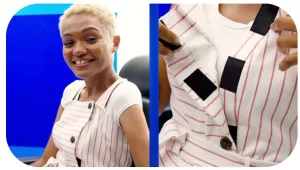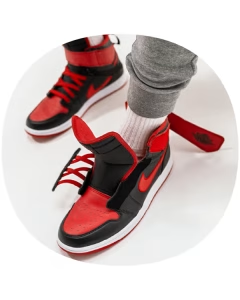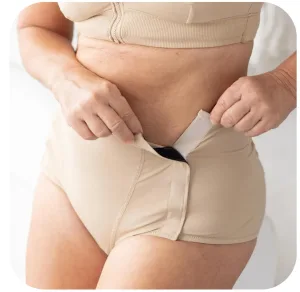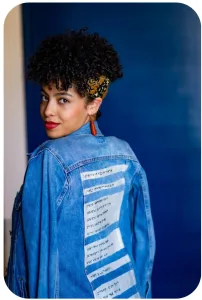

Clothing is one of the most tangible ways individuals claim their space in public life. It serves as a statement of identity, cultural belonging, and personal style. At the same time, it influences how people perceive themselves, as recognized by the theory of enclothed cognition. Choosing what to wear, therefore, is not just about aesthetics—it’s connected to autonomy, social participation, and dignity.
For people with disabilities, however, access to clothing that meets the needs of their bodies, as well as their age, personality, and social roles, remains limited. Garments often serve purely functional purposes—overlooking personal expression and, intentionally or not, reinforcing stereotypes of dependency, infantilization, or marginalization. The discussion around adaptive fashion is therefore not a matter of luxury—it’s a matter of rights.
In practice, many people with disabilities rely on others—primarily parents or caregivers—for daily dressing. These caregivers perform demanding and often invisible work, consistently and devotedly. Even with the best intentions, though, routines that are developed can fail to reflect the individual’s actual needs or their right to self-expression. A common example is choosing clothing that aesthetically resembles children’s wear—even for adults. This is often not due to neglect but a consequence of long-standing care routines. For instance, adult bibs may be used for those with salivation, while alternatives like a stylish bandana can achieve the same functional purpose while adding a touch of personal style and respect for adulthood.
Clothing Designed for Needs, Not Prejudices
For decades, clothing design for people with disabilities was on the margins of fashion and commercial production. Their garments—especially footwear—were primarily produced by pharmaceutical or orthopedic companies, reflecting a mindset that saw people with disabilities mostly as patients. Functionality was prioritized, often at the expense of aesthetics, age-appropriateness, or personal expression. The result was clothing that segregated rather than included.
This perception is now changing. People with disabilities are increasingly recognized as equal consumers, not asking for “special” clothes but for clothing that meets real needs without marginalizing them. Adaptive clothing fills this gap. It is not a medical solution but a design approach centered on accessibility, autonomy, and inclusion.
What is Adaptive Clothing?
Adaptive clothing is designed or modified to be easier and more comfortable for people with disabilities. Its philosophy is based on universal design and the belief that clothing is not a luxury but a fundamental part of self-determination.
Some common adaptations include:
From Care to Style: When Fashion Becomes Inclusive
The market is starting to respond. Some initiatives stand out, not only because they offer technically adapted clothing, but because they respect modern aesthetics, style, and the individual’s social identity.
Tommy Hilfiger Adaptive
 One of the first mainstream brands to launch a full adaptive collection, Tommy Adaptive incorporates discreet magnetic closures, adjustable hems and sleeves for people with prosthetics or wheelchair users, and smart openings for easier dressing. Fabrics are also chosen with sensory-friendly considerations.
One of the first mainstream brands to launch a full adaptive collection, Tommy Adaptive incorporates discreet magnetic closures, adjustable hems and sleeves for people with prosthetics or wheelchair users, and smart openings for easier dressing. Fabrics are also chosen with sensory-friendly considerations.
Nike FlyEase

Initially designed for a young athlete with cerebral palsy, the FlyEase and EasyOn lines now include shoes that can be worn easily without using hands, featuring zippers or Velcro straps—ideal for individuals with mobility limitations.
No Limbits
Founded by an amputee woman, No Limbits creates clothing for people with amputations, mobility challenges, or prosthetics. Clever zippers, reinforced stress points, and stretchy fabrics offer comfort and functionality.
Slick Chicks

This brand designs underwear with side openings, allowing people with limited mobility to dress while seated. The focus is on empowerment and independence at the most personal level of clothing.
Auf Augenhoehe
The German brand, meaning “at eye level,” creates garments for people with dwarfism based on real body proportions rather than simply offering smaller sizes.
Aille Design
Aille incorporates Braille into clothing, both as an aesthetic element and an informative tool. The result is inclusive clothing for people with visual impairments, deafblindness, or low vision—featuring messages that can be read by touch.

The conversation about clothing and disability isn’t just about garments—it’s about how we understand equality and participation in society. Ensuring access to stylish, functional clothing is part of creating a world where everyone can engage fully and authentically.
Skip to content